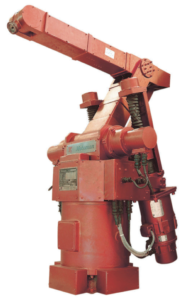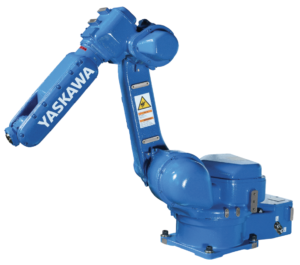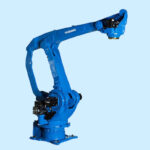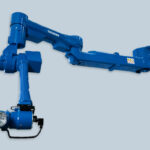ASIA ELECTRONICS INDUSTRYYOUR WINDOW TO SMART MANUFACTURING
Yaskawa Electric Expands Application-Optimized Robots
Yaskawa Electric Corporation has been expanding application-optimized robots for industrial use in response to diverse market needs.
Since 1977 when the company shipped Japan’s first all-electric industrial robot, MOTOMAN-L10, cumulative shipment of MOTOMAN surpassed 500,000 units in Feb. 2021.

Founded in 1915 in northern Kyushu to manufacture and sell electrical machines for use in coal mines, Yaskawa Electric has promoted electrification and automation of industries for over 100 years. The company’s technology started with the in-house development of three-phase induction motors. The company has developed mechatronics as application technology of motors. At present, it possesses the highest levels of technologies in power conversion, motion control, and robot.
Product Development
In 1994, the YASNAC MRC robot controller achieved fully independent cooperative operation of multiple robots for the first time in the industry. In the beginning of 1997 when Yaskawa Electric brought the MOTOMAN industrial robot to market, the company carried out product development by taking advantage of its strength in the manufacture of components that require high quality, such as underbody parts and mufflers, to meet automation and labor-saving needs at automobile manufacturing plants. In 2003, the company released MOTOMAN-EA1400N as an application-optimized robot whose structure was optimized for different uses and functions by application, as a result of thorough pursuit of customer needs, adding to general-purpose robots that can be used for a variety of applications from welding to handling.
Adding to its lineup of six-axis robots, Yaskawa Electric has commercialized a seven-axis robot that has achieved the same degree of freedom as a human arm. Furthermore, by applying the seven-axis robot, the company has developed more advanced robots, such as a dual-arm robot that can reproduce works performed by a human with both arms, and a collaborative robot that can co-work with people, opening up a new robot market that leverages advanced technologies.
In its efforts to move towards globalization, the company has established production bases in Japan, Changzhou in China, and Kocevje in Slovenia. At present, the company has a monthly production capacity of 3,200 units.
New Application-Optimized Robots
With the expansion of the robot market as backdrop, Yaskawa Electric has been aggressively promoting the development of application-optimized robots. The company provides a diverse lineup of robots optimized for welding, handling, assembling, coating, and transferring liquid crystal panels and semiconductor wafers.
Among the company’s new products include the MOTOMAN-GP Series, such as MOTOMAN-GP300R for the automotive body production process; SEMISTAR-GEKKO MD124D clean robot for transferring semiconductor wafers; the MOTOMAN-PL Series for palletizing; MOTOMAN-GP4, which is optimal for the assembly and transfer of small components; and MOTOMAN-HC10DTF for food factories.
The company has also brought to market the MOTOMAN-MHP45L explosion proof specification handling robot, which can be used in the coating area wherein volatile paints are used, and the MOTOMAN-MPX1400 compact paint robot.

Yaskawa Electric advocates the i³-Mechatronics solution concept, which adds digital data management that uses data-driven technology to conventional automation solutions. The company positions industrial robots as core equipment of the i³-Mechatronics solution. By applying a technology that uses process data from the servomotor incorporated in a robot and/or external sensors, it will further enhance the abilities of robots to make judgement and carry out works; thereby providing new automation solutions to areas where conventional robots were difficult to be used, and targets to achieve industrial automation innovation.




